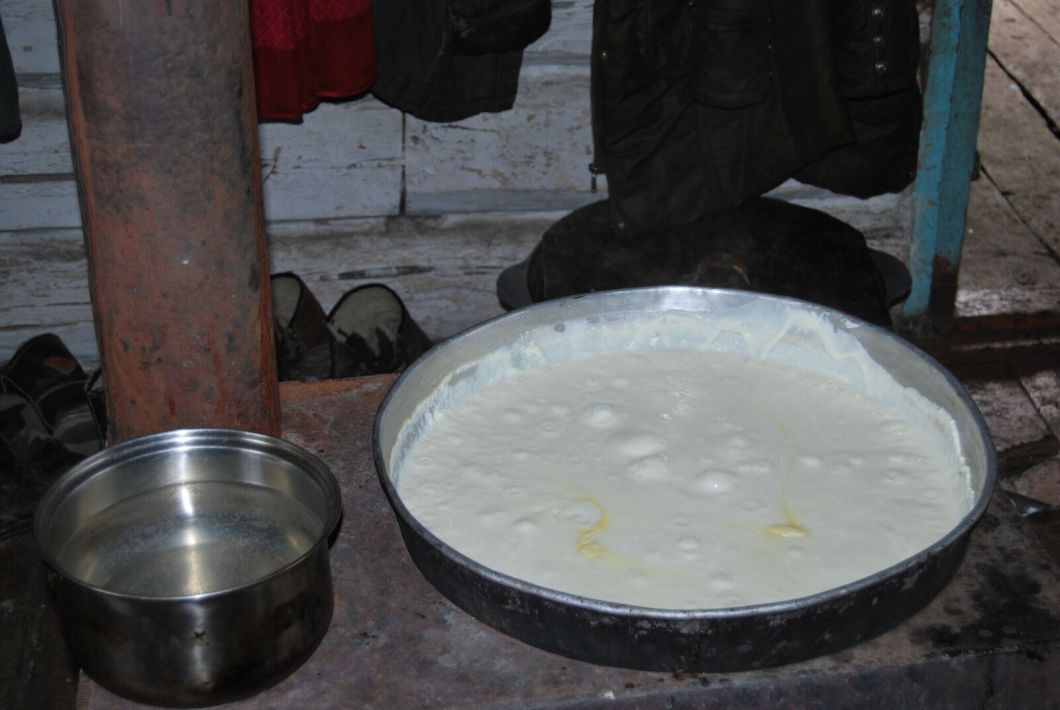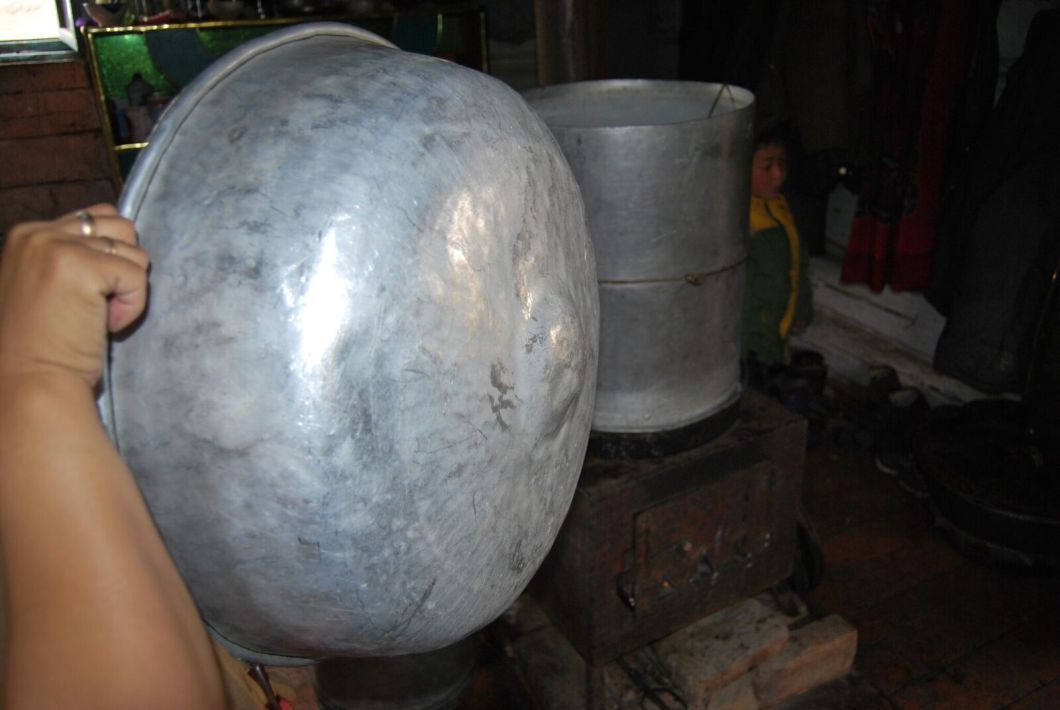Yes You Can Milk A Reindeer: 9 Dairy Animals That Don’t Say “Moo”
We’re all familiar with cow’s milk in its many possible forms: in your coffee, on your cheese sandwich, in a sundae, and of course as the butter sculptor’s medium of choice. And most of us have dabbled at various times in goat’s or sheep’s milk and cheese while out to eat or strolling down the “fancy” aisle of the supermarket, but these few farm animals are just some of many mammals whose milk can be enjoyed, or at least tolerated.
Why are we so limited in our dairy endeavors? Part of it has to do with where we live — there aren’t many yak or reindeer dairy farms stateside — but it also has to do with what our bodies are used to.
“Unpalatable fat and protein levels keep some milks off the shelves, but the difficulty of milking recalcitrant beasts can be no less an obstacle,” Benjamin Phelan wrote for Slate in 2012, addressing the question of why we don’t milk mammals other than cows.
And yet, it can be done. Here are nine non-cow animals other than cows that provide humans with milk in sometimes far-flung parts of the world.
1. Goat
Image courtesy of Phil RoederBecause goat’s milk has less lactose than cow’s milk, some people may find it easier to digest. That’s because its proteins are a bit different, more similar to the structure of human breast milk than cow’s milk, explains Modern Farmer. It has some other advantages over cow’s milk: it has more calcium, magnesium, potassium, and Vitamin C.
Another reason goat’s milk isn’t as common in the U.S. as cows? Dairy cows produce about 20,000 more pounds of milk annually than goats, according to the Oshkosh Northwestern.
2. Sheep
Image courtesy of Magnus ReuterdahlIf you want fatty milk, go for the sheep, whose milk has twice the content of cow’s milk, making it an unappetizing beverage to gulp. That same fattiness makes it appealing to cheese makers, however, who use it to make cheeseboard standouts like chèvre and Roquefort, among others.
“The sheep people are a weird bunch,” one chef told Slate. “Sheep are difficult to raise, and fickle. You don’t get much yield, and the cheese isn’t that popular, so you’re talking about an eccentric person. It’s very difficult.”
3. Water Buffalo
Image courtesy of navnetmittYou might not think you’ve had water buffalo products, but if you’ve ever enjoyed some mozzarella di bufala, well, you have: The animals are raised in Campania, Italy, to make that specialty cheese.
For most Americans, that’s the most likely exposure they’ve had to water buffalo milk, but it’s a different story in India, the largest producer and consumer of water buffalo cattle and milk. Clarified butter, or ghee, made from the milk is especially popular.
But before you sidle up with a pail to help yourself to some water buffalo dairy products, be warned: They’re not the easiest creatures to milk.
“One Wisconsin dairyman (a former lieutenant colonel in the Israeli military) who had acquired a herd of dairy buffalo told a newspaper that milking them was more difficult than leading troops into war,” Slate’s Phelan wrote.
Despite that, there are some farms in the U.S. moving into water buffalo territory, Modern Farmer reported in 2014, though these farms are currently far-flung and small.
4. Donkey
Image courtesy of Josh KelahanYes, you can milk a donkey, Modern Farmer reported, and yes, sometimes it’s called “ass milk.”
Moving along.
Some folks may recall that Cleopatra allegedly bathed in it, and in modern-day Europe, some folks are getting into donkey milk as food.
“The milk works very well in a number of recipes,” one chef who’s used it to make desserts like panna cotta and mousse told Modern Farmer, “and when you add in sugar and chocolate in particular, the taste is amazing.”
5. Yak
Image courtesy of Sean QuirkIn central Asia, tea with yak ghee — clarified butter — is all the rage, as is milk alcohol. Just take it from my brother Sean, who just happens to live with his family in Kyzyl, Tuva, an autonomous republic within Russia.
“Yak milk is a little richer maybe than cow milk but really pretty similar — yaks and cows are so close that they can interbreed,” he told me.
And all that ravening Genghis Kahn and his hordes did? Powered by yak.
“This is what allowed Genghis Khan’s armies to travel so fast for so long — they didn’t stop to eat, they just nourished themselves with this curd, called ‘kurut’ which is very light to carry,” my brother explains. “The whey can be drunk and is also used in softening leather.”
How My Brother Makes Milk Alcohol
First, fermented milk (a bit like kefir), is boiled; when it boils, the alcohol evaporates and then condenses on the underside of of another bowl that’s placed on top and filled with cold water.

The “nipple” shape of the bowl allows the condensed alcohol to drip into the central collectors.

The leftover fermented milk is then squeezed through a sack, separating the curds and whey.

“The curds can be eaten fresh or also dried into little hard chunks which are light, long lasting, and super nutritious,” my brother explains.
6. Moose
Image courtesy of Kostroma Moose FarmIt’s far from common, but there are moose dairies in Russia, notes Modern Farmer, including one with 30 moose, located about four hours from Moscow in Kostroma.
The “pine-scented delicacy” is carefully milked from these huge animals and is known as a cure for peptic ulcers: it’s high in butterfat — around 10%, compared to cow milk’s 5% average — which works to kill ulcer-creating bacteria. A local sanatorium has been dispensing moose milk as a treatment “for an array of diseases and disorders for over 30 years.”
7. Reindeer
Image courtesy of linhvienthaiThis is one reindeer game you probably won’t ever play, not only because most Americans don’t live around herds of these animals, but also because it’s really tricky to obtain reindeer milk (which has a fat content of 22%, several times that of cow’s milk), as it takes two people to milk a reindeer, FoodNavigator.com reports.
Regardless, Laplanders in northern Scandinavia use reindeer milk exclusively because they’re the only animals that can withstand such a cold environment.
Some central Asian folks, including Tuvans and their neighbors in Mongolia, also consume reindeer milk products like yogurt.
While my brother isn’t intimately familiar with reindeer herding in the area, he pointed me to Dan Plumley of Adirondack Wild, an organization dedicated to the protection, enhancement, and education of wild land values in the Adirondack Park and Catskills.
Plumley has worked with reindeer herding culture since 1993, when he started a project aimed at improving the reindeer herd of the Dukha, which totaled only 400 to 600 reindeer then. Today, that herd numbers over 1,500 healthy reindeer — animals he’s had the chance to milk himself.
“It is a two-person job because one person is needed to keep the animal in one place and calm usually by standing near the head and neck of the animal and holding its bridle – head strap,” he explains, while the other person does the actual milking.
The process doesn’t take long, since female reindeer only give about one to two cups of milk each day, Plumley explains, so herders will milk several reindeer to get the milk they need for cooking and meals.
In his time working with the Dukha, Plumley says he’s enjoyed reindeer milk, cheese, and yogurt.
He claims it is delicious, creamy, high-fat milk, but low in volume per animal when compared to cattle, horses or yaks. Plumley offers a pro-tip for dairy lovers: “I love fresh reindeer yogurt in the taiga — it’s always a cooling, tasty treat with a little kick to it.”
8. Horse
Image courtesy of Jeanne MenjYou’re not going to find horse cheese on the shelf, but in Central Asia, folks use fermented horse milk to make a slightly alcoholic, fermented drink called Kumiss.
9. Camel
Image courtesy of International Livestock Research InstituteWhether you’re milking a two-humped camel or a single-humped camel, the results are the same. While camel milk is particularly popular for folks living in hot, arid climates, the stuff has gone mainstream, albeit very slowly, Modern Farmer reports: starting with Oasis Camel Dairy near San Diego, there are now seven camel milking facilities in the U.S.
Want more consumer news? Visit our parent organization, Consumer Reports, for the latest on scams, recalls, and other consumer issues.

